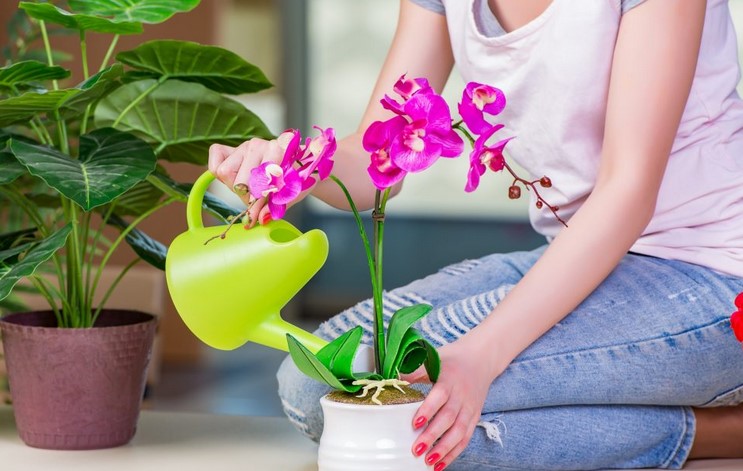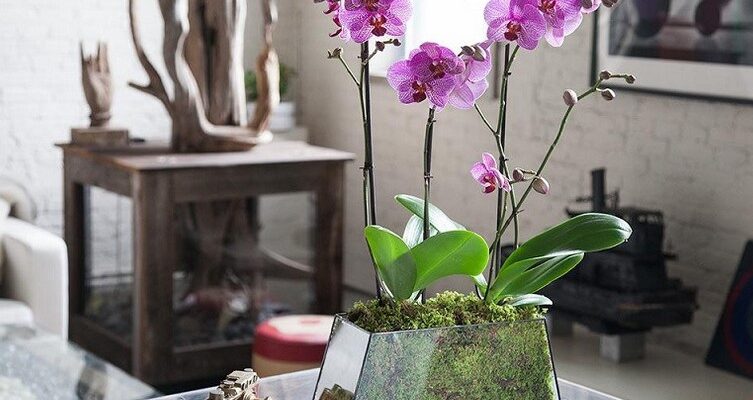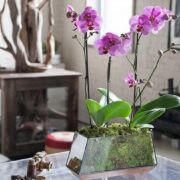To provide your orchid with the proper care it needs, you should fill a sink with water and submerge your orchid for five minutes. Let it drain, and repeat this process as necessary. During the grow season, you should add liquid fertilizer to the water. Organic liquid fertilizers are best for the roots of orchids. Mist the orchid’s leaves and roots periodically in between waterings to keep them hydrated. If you don’t water your orchid enough, it can develop fungal infections.
Orchids are one of the most popular indoor plants, and with good reason. There are over 25,000 varieties of orchids and they come in a dazzling array of shapes, sizes, and colours. Because they aren’t tough like other plants, such as houseplants like succulents and dracaenas, people often assume that orchids are notoriously hard-to-grow plants and belong only in greenhouses or botanical gardens. You can have orchids as great houseplants too – given the right conditions! If you’re new to orchid growing, take heart. It’s easier than you might think given the right conditions when it comes to how to take care of orchids.
Dendrobium orchids
If you are interested in growing your own Dendrobium orchids, there are several things you should know. In general, the plant needs a bright, dry place to grow. It requires a moderate temperature range, between 10 and 12 degrees Celsius. You can easily propagate the plant by using cuttings, or by dividing the bush. Watering and proper ventilation are important for maintaining the health of the plant.

Phalaenopsis
Proper Phalaenopsis care at home begins with understanding the nutrient requirements of this beautiful orchid. It prefers a cool climate of between 13 and 15 degrees Celsius. A glazed balcony is the perfect place to keep your orchid during the cooler months. Phalaenopsis care at home also involves fertilizing it with a balanced fertilizer. This plant is watered twice daily during active growth, and once a month during rest periods.
Keiki orchids
Keiki orchids are clones of mother plants that take up to three years to bloom. The plant must have three leaves and roots that are approximately two or three inches long to be a keiki. The keiki’s flower spike will be the same color as the mother plant’s and it will eventually grow into its own plant. This process happens naturally, and occurs because of a growth hormone that accumulates at the flower node.
Peacock orchid
Planting the Peacock Orchid is easy. The plant can be grown in containers or directly in the ground. They prefer moist soil and are best suited for USDA hardiness zones seven through 11. They need constant moisture, which should be kept around 60 percent. Pseudobulbs should be planted in soil that has been amended with organic matter. If necessary, spray the plants with water during the dry season to promote a healthy growth.
Nobile orchid
Nobile orchids can be cared for at home by following a few simple steps. After flowering, orchids need to be brought to a cool room, preferably 16° C during the day and 10° C at night. Watering and top dressing should be reduced after flowering. To revive pseudobulbs, spray the plant with water occasionally. During the cold season, reduce watering. During the dormant season, keep the plant in a dark and cool place.

Phalaenopsis transplanting
When phalaenopsis orchids are young, you should not try to transplant them at home. However, after two or three years, the soil gets too dry and compacted, and it should be replaced with fresh material. Make sure that the new pot is slightly larger than the old one, or the roots will be unable to grow properly. This will delay flowering, and you’ll waste energy repotting.
Air circulation
When you’re growing orchids indoors, good air circulation is essential. Open windows during the warmer months to encourage a gentle breeze. During the winter, turn on an oscillating fan to mimic the cool breeze of a tropical forest. However, remember to rotate the fan regularly to avoid drying out your orchids. You can also use a portable fan that will move air around without disrupting your orchids’ environment.
Feeding
The first feeding after transplanting should be done when the plant begins to sprout new shoots. The most effective fertilizer to use for this feeding is succinic acid. If you do not feed your orchid properly, you may end up with a neglected plant. To prevent this problem, here are some tips for feeding your orchid at home. Here are three important tips for feeding your orchids:
It’s fairly easy to grow orchids as long as you provide them with the right amount of sunlight, water, fertilizer, etc. And with some patience and a few care tips, anyone can keep an orchid alive for many years. If you’re thinking about adding an orchid to your home or office, be sure to read the following guide before making any purchases. A few good tips from this guide will help any orchid lover make their plant happier and healthier.









